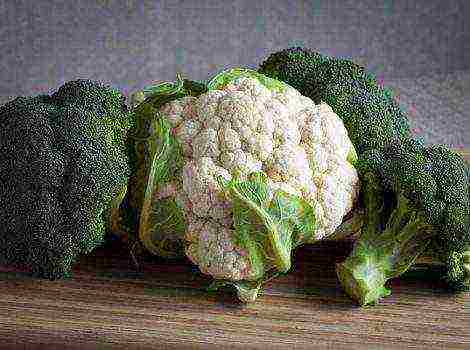Content
- 1 Correct planting and caring for the black handsome zucchini
Correct planting and caring for the black handsome zucchini
"I laid my heavy barrel on our garden without difficulty and without charging - a strong, ripe zucchini." Zucchini is a versatile vegetable, very popular among the people for its unpretentiousness, productivity, ability to replace cucumbers in conservation in lean "cucumber" years. With the onset of fruiting and throughout the summer season, they find their use in the family menu. And if you choose the right variety, then you can pamper yourself with zucchini dishes at least until the New Year. One of these varieties is the Black Beauty zucchini..
Description and characteristics of zucchini zucchini Black handsome
Black handsome, like all zucchini, belongs to the pumpkin family. Zucchini Zucchini Black handsome has a compact bush, carved leaves on long stalks are decorated with white spotted stains.
Zucchini variety early ripening... It begins to bear fruit on the 45-55 day from the moment of germination.
Fruits are smooth, up to 25 cm in size and weighing up to 1 kg of dark green, almost black color, hence the name of the variety. Up to 5 fruits can form on the bush at the same time.
The peel of the fruit is thin and not tough, the flesh is white with green, tenderbut dense and juicy. Young greens with a very delicate and delicate taste without cooking can be used in salads instead of cucumbers.
Zucchini Black handsome - a variety of foreign selection, adapted to growing conditions throughout Russia and neighboring countries.

Advantages and disadvantages
The Black Handsome has no flaws, and the advantages are:
- early ripening;
- excellent taste (thin skin and tender, juicy, dense pulp), excellent appearance;
- the compactness of the bush and high yield make it possible to receive up to 20 kg of fruits from 1 m2 of area, and up to 10 kg from one bush;
- long fruiting period;
- good transportability and keeping quality;
- versatility of use.
Preparing seeds for planting
Seed preparation for planting consists in:
- Checking the quality of seeds for germination consists in the visual and touch selection of full-weight seeds.
- Disinfection of seeds in a pink solution of potassium permanganate for 20 minutes, after which the seeds are washed in clean water.
- Pre-soaking of seeds in a growth stimulator or potassium humate for fast and friendly germination of seeds.
- The last step in preparing the seeds is to place them in a damp cloth until the seeds hatch. This will take 2-5 days.

Soil preparation
Zucchini is grown in well-lit areas with loose fertile soil.
The place chosen for landing well seasoned with organic matter from autumn (with manure, chicken droppings or humus) and dug up.
You can make such beds in the spring., but then it is necessary to dig small trenches, approximately on the bayonet of a shovel and put all the organic matter in them.
In the soil poured over organic matter, holes are made into which humus, wood ash are added, spilled well with hot water and seeds or seedlings are planted.
In such beds, heat-loving zucchini is warm and cozy. from the heat and carbon dioxide constantly coming from the depths of the garden from decaying organic matter. Zucchini grow and bear fruit by leaps and bounds.
Also feel comfortable and plants planted on compost heaps.
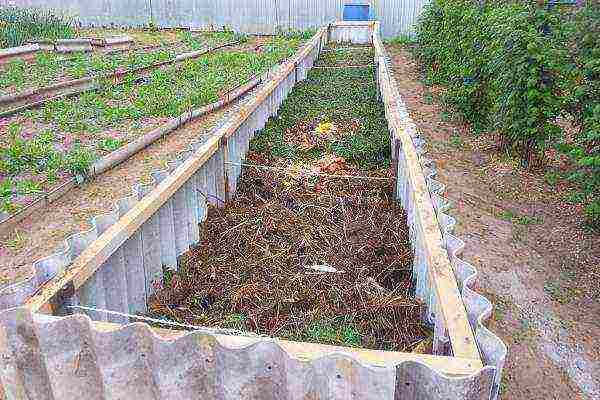
How to plant
You can grow zucchini directly sowing them into the ground or through seedlings... It all depends on the region of cultivation and the timing of the desired receipt of the first product.
And you can grow seedlings, plant them in April under the covering material and get the first harvest of zelents in May.
When the ground warms up and there is no threat of recurrent frosts, you can also plant seeds directly into the ground. Thus, the conveyor of zucchini products is provided to you for the entire season until the very frost.
Experienced vegetable growers believe that when sowing seeds directly into the ground, the harvested zucchini are of higher quality and maturing.
With the seedling method of growing zucchini seeds for seedlings are sown for planting in open ground in March, for growing in greenhouses and greenhouses in February.
2 seeds are planted in planting containers with a diameter of at least 10-15 cm, the strongest of the grown plants is subsequently left.
It is better to fill the container with soil by ½ this so that if the plants are very stretched, you can gently twist the stalk in the pot and cover the cotyledon leaves with earth.
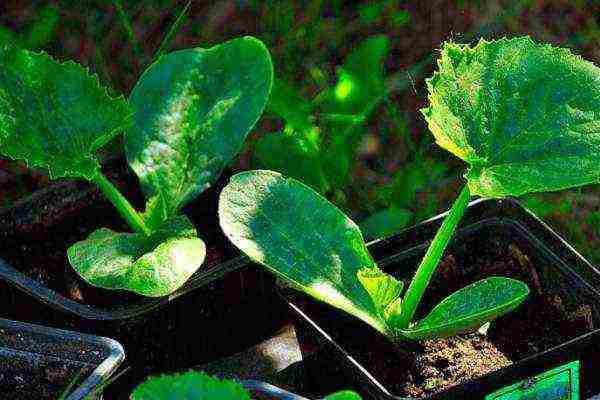
With the appearance of the second true leaf, the seedlings are ready for planting in greenhouses, hotbeds, or, if the weather permits, in open ground.
When sowing seeds in open ground it should be borne in mind that the plant is thermophilic and planting is carried out at a soil temperature of + 10 ÷ + 15 ° С. The wells are filled with water, the seeds are placed "on the barrel". The seeding depth is 3-4 cm.
Zucchini can be grown in a strip or nesting method. When landing with ribbons the holes are made every 0.5 m, one plant is placed in each hole.
Plants grow, so if several rows are planted, then the distance between the rows is at least 1 m.
With the nesting method several plants are located in the nest, so the holes are made every 1 m.
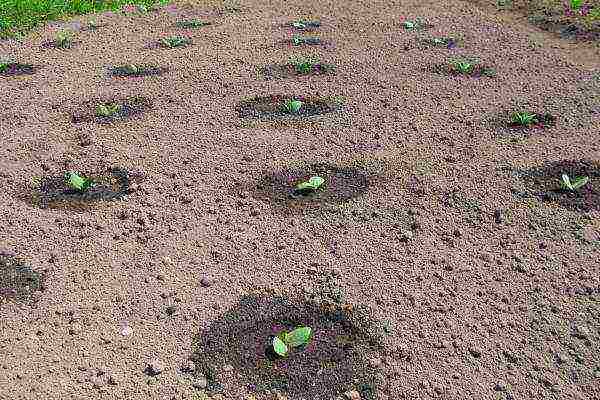
Care after
Further care of the plants consists in watering, feeding and loosening.
Watering
They should be regular as the soil under the plants dries up. Poured under the bush at least 5 liters of water for one irrigation.
The water for irrigation is warmto avoid rotting ovaries and fruits. Excess moisture is also harmful to zucchini, it can lead to root rot and the development of fruit rot.
Top dressing
There must be at least 3 of them. The first is carried out before flowering nitroammophoska solution 20-30 gr. 10 liters of water or infusion of mullein or bird droppings.
During flowering make potassium-phosphorus fertilizers (potassium nitrate, superphosphate, 50 grams per 10 liters of water). Can be fed with potassium humate.
The third is performed during the formation of the ovary organic fertilizers with wood ash infusion.
In the future, zucchini constantly bloom and bear fruit, plants spend a lot of energy on these processes. To maintain the viability of the plant, it is advisable to apply organic fertilizers every two to three weeks throughout the growing season.
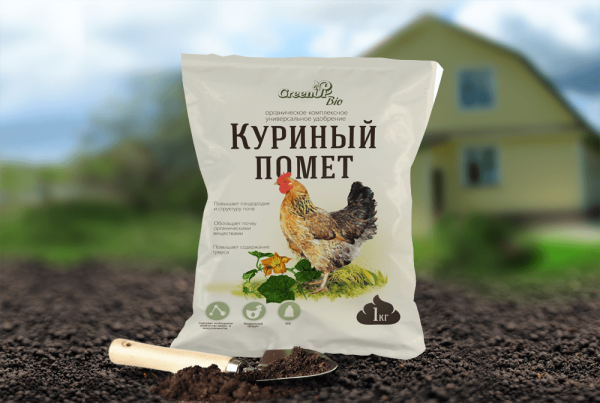
Shaping and loosening
Zucchini do not need shaping, since the plant is bushy and does not particularly branch, but it is necessary to remove the lower yellowing leaves, you also need to remove barren flowers - flowers without ovaries.
Zucchini are plants with a shallow root system, therefore loosening must be done very carefully to avoid damage to the roots.
Diseases and their prevention
Black handsome zucchini variety resistant to the main diseases of the pumpkin family (powdery mildew, anthracnose, peronosporiosis).
But for prevention purposes, you need to adhere to a number of rules for growing plants:
- Observe the crop rotation and do not plant plants in the same place every year. Zucchini should be returned to its original place no earlier than after 3 years.
- Watering should be moderate, since excessive soil moisture and high humidity under the plants are a fertile environment for the development of microbes and infections.
- In order to prevent fungal and bacterial diseases, it is necessary to carry out pre-planting disinfection of seeds.
- Follow the recommended planting patterns, avoiding thickening.
- At the first signs of disease, remove the affected parts of the plants or completely the bushes, taking them outside the site and burning them.
- To treat plants with chemical preparations intended for the treatment of this disease, at the first symptoms of the disease.
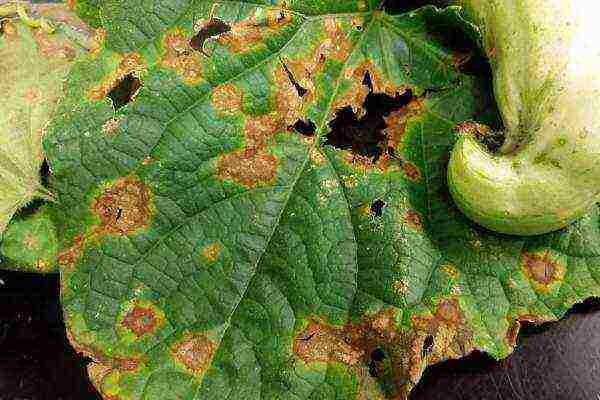
Harvesting and storage rules
You need to collect zucchini regularly when the fruits reach 15-20 cm, every 2-3 days, excluding their overripening. This will stimulate the development of new ovaries and fruits.
For long-term storage select the fruits harvested before the onset of frost weighing at least 1 kg.
Basic storage rules zucchini allowing you to keep the harvest until spring:
- when collecting fruits, leave the length of the stalk at least 5-10 cm;
- remove the earth from the fruit with a dry cloth; you cannot wash the zucchini;
- zucchini should be stored open, storage in plastic bags is categorically contraindicated (condensation formed during storage leads to rotting of the fruit);
- you need to store vegetables in a dry, cool, dark place (basement, cellar, pantry), storage temperature + 4 ÷ + 10 ° C;
- at room temperature, the shelf life of zucchini is 1-1.5 months.
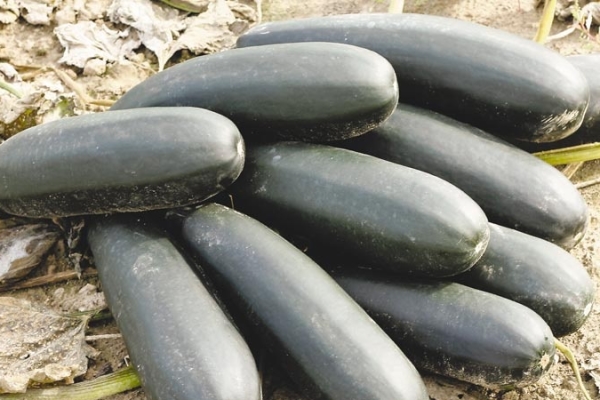
Not a single gardener will deny himself the pleasure of growing zucchini on his site.
When choosing a variety, stop your gaze on the zucchini Black Beauty, and it will not only delight you, but also surprise you with its yield, taste and external beauty.
